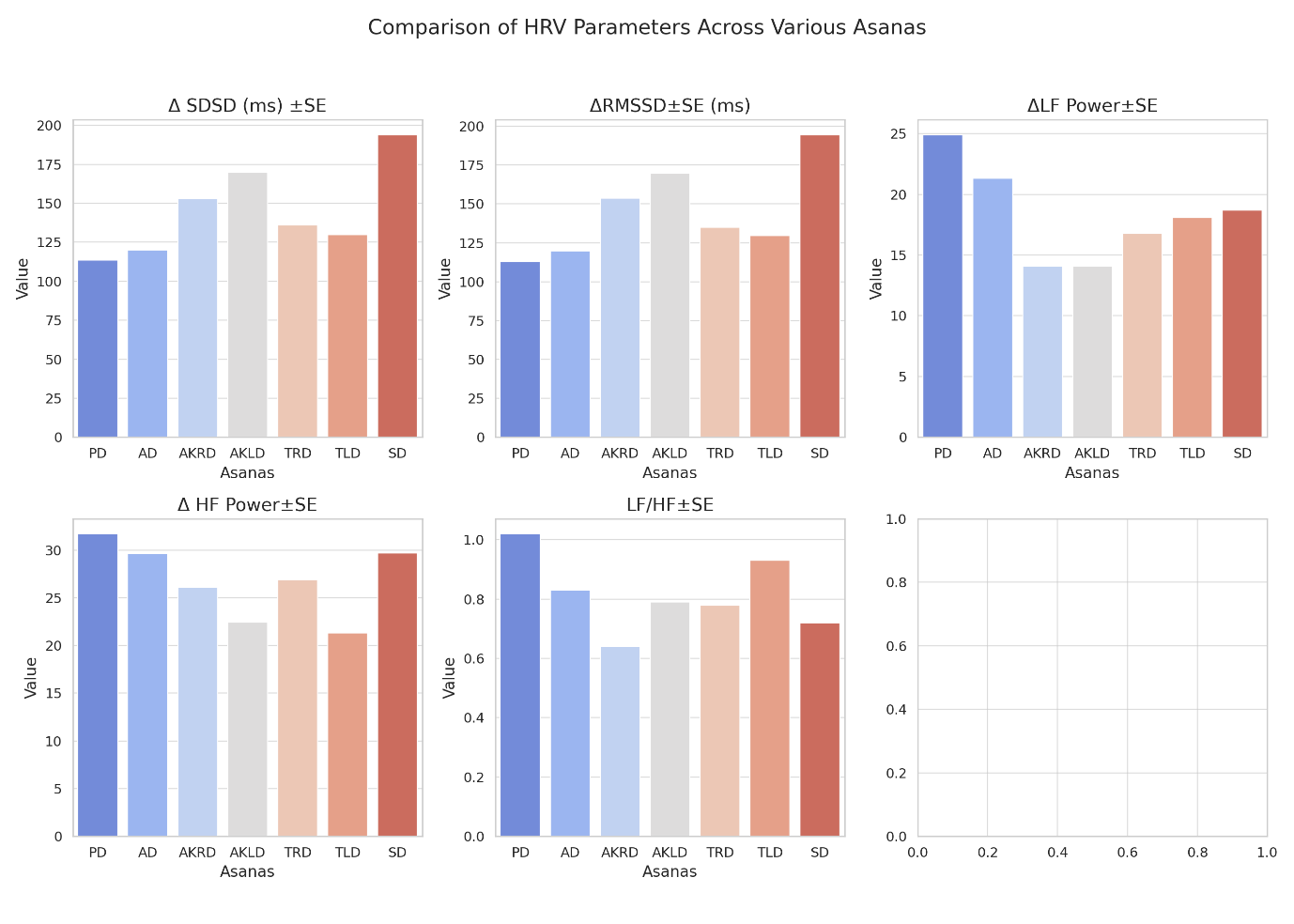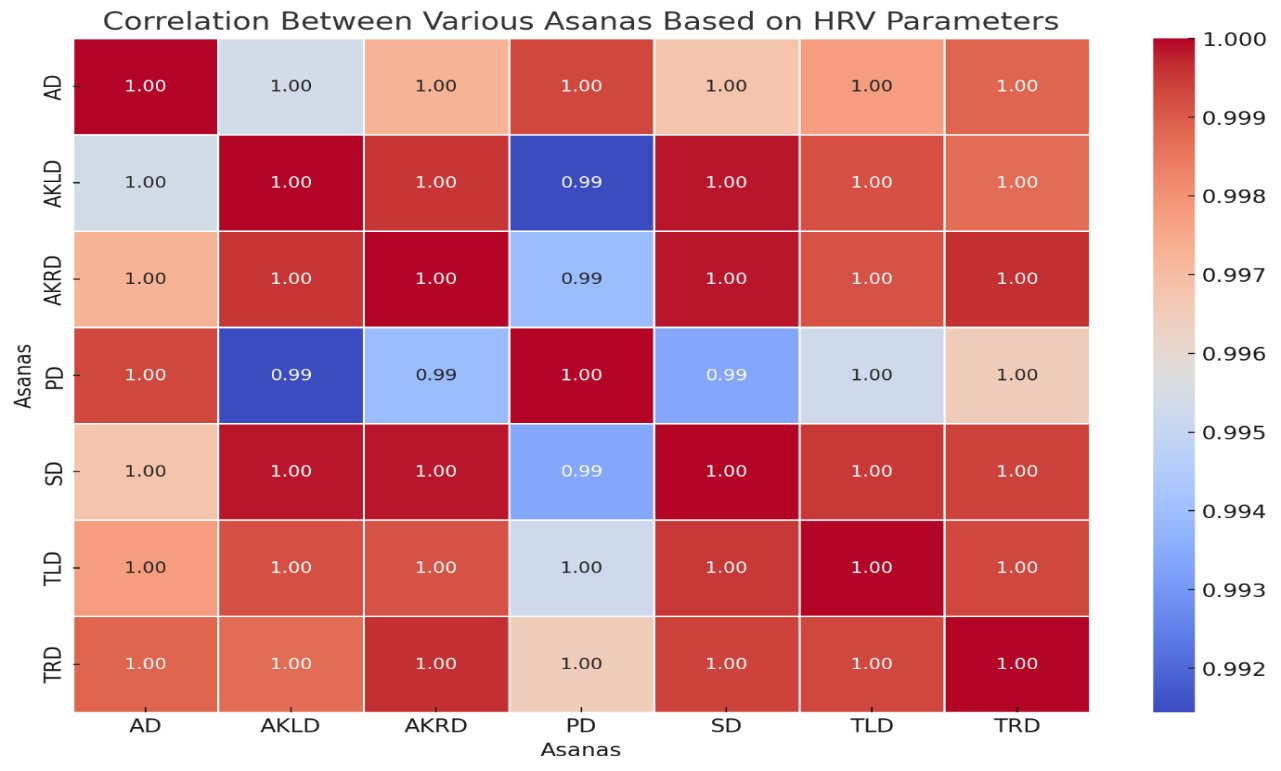Introduction
Cardiovascular diseases (CVDs) remain a pervasive global health challenge, consistently standing as the leading cause of both mortality and morbidity, with millions of lives succumbing to their impact annually.1 Given the staggering impact of CVDs on public health, there emerges an imperative demand for innovative approaches in prevention and treatment strategies.2 At the core of cardiovascular regulation lies the cardiac autonomic nervous system (CANS), a system that has garnered escalating attention due to its pivotal role in the initiation and progression of CVDs.3 Through a precise equilibrium achieved by the interaction between the sympathetic and parasympathetic components, the CANS wields an orchestral influence, regulating critical parameters such as heart rate, myocardial contractility, and vascular tone, thereby intricately shaping cardiovascular homeostasis.4
Heart rate variability (HRV), characterized by the fluctuation in RR intervals between successive heartbeats, emerges as a non-invasive and dependable gauge of autonomic function.5 Deviations in HRV have been closely linked to a plethora of pathological conditions, spanning from hypertension to coronary artery disease and heart failure,6 amplifying its significance as a target for therapeutic interventions. Furthermore, diminished HRV has demonstrated its ability to predict cardiovascular morbidity and mortality.7
Amidst this intricate interplay of physiology and autonomic dynamics, the practice of yoga emerges as a holistic approach that potentially holds keys to promoting cardiovascular health. Originating from ancient traditions, yoga transcends its historical roots to encompass a holistic system that integrates physical postures (asana), controlled breathing (pranayama), mindfulness, and meditation techniques. Beyond its spiritual underpinnings, the multifaceted nature of yoga addresses the physical, mental, and emotional dimensions of well-being. Earlier studies have demonstrated yoga's positive influence on a spectrum of CVD risk factors, including blood pressure reduction, lipid profile improvement, and stress alleviation.8
While the general benefits of yoga practice on cardiovascular health have been increasingly documented, the existing body of research often lacks specificity. Many studies focus on the cumulative effects of a yoga on cardiovascular health’s, which typically involves multiple Asanas (poses), Pranayama (breathing exercises), and sometimes Dhyana (meditation).8 There is a scarcity of research focusing solely on the influence of individual Asanas on HRV parameters.
This study aims to narrow this research gap by conducting a detailed investigation into the relationship between individual Asanas and specific HRV parameters (time and frequency domain parameters). By understanding how different Asanas affect these parameters, healthcare providers and researchers could tailor yoga interventions to target specific cardiovascular health outcomes more effectively.9
The primary objectives of the study are:
To measure and compare HRV parameters across a selection of individual Asana.
To investigate correlations between different Asana based on their HRV profiles.
Based on these objectives, the study posits the following hypotheses:
Different Asanas will yield distinct HRV profiles, impacting HRV parameters to varying degress.
Asanas with similar HRV profiles will show strong correlations, indicating their potential for targeted therapeutic interventions.
The intent of our study extends beyond a mere exploration, aiming to establish a fundamental framework that can lay the groundwork for future, more expansive research endeavors. Subsequent investigations can further delve into the long-term ramifications and the underlying physiological mechanisms that underpin the impact of these specific asanas on cardiac autonomic function. Through this concerted effort, we envision contributing to a comprehensive understanding of yoga's holistic benefits in fostering cardiovascular well-being.
Material and Methods
Study design
The present study utilized a observational pilot design with the primary aim of exploring the immediate effects of specific yoga asanas on heart rate variability (HRV) among healthy adult males. This investigation spanned a 12 -month duration, allowing for thorough data collection and analysis.
Participant recruitment and eligibility
The study cohort consisted of 30 male volunteers in the age range of 18-30 years, who were healthy by general medical standards. Multiple recruitment strategies were employed, including the distribution of flyers, online advertisements on social media platforms, yoga university and word-of-mouth referrals.
Inclusion criteria
There was no known history of cardiovascular disease, respiratory disorders, or neurological illnesses.
Yoga Asanas selected for the study
Seven specific yoga asanas were selected based on their potential for cardiac autonomic regulation.
HRV measurement protocol
ECG was recorded by lead two using 8-channel digital physiograph (Labchart, ADI, Australia), which meets international guidelines for HRV mesurment. Each participant underwent three times 15-minute each HRV measurement sessions.
Pre-asana (Baseline) session: HRV was measured before the asanas were executed.
During-asana session: HRV was continuously measured while participants performed the selected asanas.
Post-asana session: HRV was measured immediately after the completion of the asanas.
Data collection
Data were collected in a quiet temperature-controlled room to minimize external influences on HRV. The participants were asked to lie in a supine position for baseline measurements, and HRV data were collected continuously for 15 min for the each session. Subsequently, the participants performed each selected asana under the guidance of a certified yoga instructor. HRV was measured continuously during and immediately after the asanas for another 15 min.
Parameters analysed
Both the time-domain and frequency-domain components of HRV were analysed as follows.
Statistical analysis
Data were subjected to statistical scrutiny using the Statistical Package for Social Sciences (SPSS) version 21.0. Initially, the normality of the data set was evaluated through the Shapiro-Wilk test. Depending on the distribution, either paired t-tests were employed to make comparative analyses between pre-, during-, and post-asana HRV values. p-value of less than 0.05 was considered to indicate statistical significance.
Results
This study aimed to investigate the correlation between various Asanas (yoga poses) and Heart Rate Variability (HRV) parameters, including SDSD, RMSSD, LF Power, HF Power, and LF/HF ratio. Seven different Asanas—PD, AD, AKRD, AKLD, TRD, TLD, and SD—were examined. The results section presents the data collected during this prospective observational pilot study, highlighting the immediate effects of specific yoga asanas on heart rate variability (HRV) in 30 healthy male volunteers.
Demographics
The 30 participants had a mean age of 24.5 ± 3.2 years. All the patients were deemed healthy based on their medical history and met the inclusion criteria.
Asana-specific impacts
SDSD (ms) ±SE: The Asana "SD" yielded the highest values, followed by "AKLD" and "AKRD." The Asanas "PD" and "AD" had comparatively lower values.
RMSSD±SE (ms): Similar to Δ SDSD, "SD" had the highest values, with "AKLD" and "AKRD" also showing high measures. "PD" and "AD" had the lowest values.
LF Power±SE: "PD" led in this measure, followed closely by "AD" and "SD." The Asanas "AKRD" and "AKLD" had the lowest values (Figure 1).
HF Power±SE: "PD" and "SD" had the highest values, indicating their potential benefits for cardiovascular health. "AD" and "TRD" followed closely behind. a simultaneous increase in HF power suggests a balanced autonomic response, which is potentially indicative of enhanced cardiovascular resilience.10
LF/HF±SE: "AKRD" had the lowest LF/HF ratio, which is often considered beneficial for cardiovascular health. This was followed by "SD" and "AKLD."
Data were analyzed using Pearson's correlation coefficient to examine the relationships between different HRV parameters, as well as between various Asanas. Measures analyzed included SDSD (ms), RMSSD (ms), LF Power, HF Power, and LF/HF ratio.
Correlation analysis between Asanas
"SD" and "TLD" had a moderate positive correlation (r = 0.68), indicating some similarities in HRV parameters.
A moderate negative correlation was found between "PD" and "AKLD" (r = -0.64), suggesting contrasting benefits in HRV parameters (Figure 2).
Discussion
Our study aimed to explore the correlation between various Asanas (yoga poses) and Heart Rate Variability (HRV) parameters of time domain and frequency domain such as SDSD, RMSSD, LF Power, HF Power, and LF/HF ratio. Our key findings indicate that the Asana "SD" notably excels in time-domain HRV measures like SDSD and RMSSD. Asanas "PD" and "AD" were found to be beneficial for frequency-domain HRV measures like LF Power and HF Power 2.
Interpretation and implications
The robust positive correlation between SDSD and RMSSD (r = 0.99) corroborates previous studies that have used these time-domain metrics interchangeably to assess heart rate variability.11 This simplifies the process for healthcare practitioners who aim to assess cardiovascular health using HRV metrics.12
Different Asanas offer distinct benefits for cardiovascular health. For instance, "SD," which demonstrated high SDSD and RMSSD, These postures are classified as inversions, often recognized for their calming effects, and are believed to stimulate the vagus nerve, thereby enhancing the parasympathetic activity,13 could serve as a potent intervention for individuals looking to improve heart rate variability, which has been linked to reduced cardiovascular risk.14 Conversely, Asanas like "PD" and "AD," beneficial for frequency-related measures, may offer unique cardiovascular benefits by modulating the autonomic nervous system.15
Mechanisms of action
The observed changes in HRV could be attributed to several interconnected mechanisms associated with yoga practice.
Vagal stimulation: The vagus nerve plays a pivotal role in regulating the parasympathetic branch of the ANS. Asanas like AD and SD, with their emphasis on deep breathing and stretching, may activate the vagus nerve and stimulate the release of acetylcholine, enhancing parasympathetic tone. This vagal stimulation contributes to the observed increase in HRV parameters associated with relaxation and reduced sympathetic dominance.
Mind-body connection: Yoga emphasizes mindfulness and mental focus, fostering a mind-body connection that can influence autonomic balance. Mindfulness-based practices have been linked to improved HRV, potentially through the central modulation of autonomic functions. The combination of physical postures and mental engagement in yoga could promote a state of relaxation and parasympathetic dominance.
Respiratory sinus arrhythmia: Deep, diaphragmatic breathing inherent in yoga practice can enhance respiratory sinus arrhythmia (RSA), a phenomenon where heart rate fluctuates with breathing cycles. RSA is mediated by the vagus nerve and contributes to higher HRV. Yoga's focus on controlled breathing likely contributes to the observed increase in HRV parameters.
Reduced sympathetic activity: While there was an increase in LF power, the simultaneous increase in HF power suggests a balanced autonomic response. Yoga may lead to a decrease in sympathetic activity, counteracting the traditional interpretation of LF power as solely indicative of sympathetic dominance. The interplay between sympathetic and parasympathetic activities might be more intricate than previously understood.
Clinical implications
The immediate shift towards parasympathetic dominance suggests that yoga asanas could be effectively integrated into cardiac rehabilitation programs or preventative health care strategies, especially for populations at risk for cardiovascular diseases. Furthermore, individual asanas may be selected and incorporated based on their specific effects on HRV, allowing for targeted intervention.
Limitations and Future Directions
This study has several limitations, including a small sample size, a focus on immediate effects, and the exclusion of female participants and individuals with preexisting health conditions. Future studies should aim for a larger and more diverse sample and examine the long-term effects of these asanas on cardiac autonomic function. Mechanistic studies are needed to understand the underlying physiological pathways involved in these changes Given the distinct HRV profiles of different Asanas, future research could look into the physiological mechanisms underlying these differences. This could involve in-depth physiological monitoring to better understand how specific Asanas contribute to cardiovascular health.
Conclusion
Our study further aids in the field of evidence based that suggests various Asanas play critical role of modulation of cardiac autonomic tone positively and hence positively affecting the cardiovascular health of the individuals. We suggest more research is needed to fully understand the physiological mechanisms. Our findings provide a promising starting point for targeted, Asana-specific cardiovascular interventions.
The study revealed significant variances in HRV parameters across different Asanas. These parameters are associated with higher vagal (parasympathetic) activity and are generally considered markers of good cardiovascular health.16 Elevated post-asana RMSSD values further support the hypothesis that yoga, particularly in certain postures, may favourably affect cardiac vagal modulation. Specific Asanas showed strong correlations in their HRV profiles, providing insights into their potential for improving different aspects of HRV and cardiovascular health.
Ethical Considerations
Ethical clearance for this research was secured from the Institutional Review Board (IRB) at AIIMS Raipur. Prior to initiating the study, each participant was required to sign a written informed consent form. This protocol was implemented to confirm their voluntary involvement in the study and to assure participants of their anonymity and the confidentiality of their data (Letter No.: 1398/IEC-AIIMSRPR/2020).


